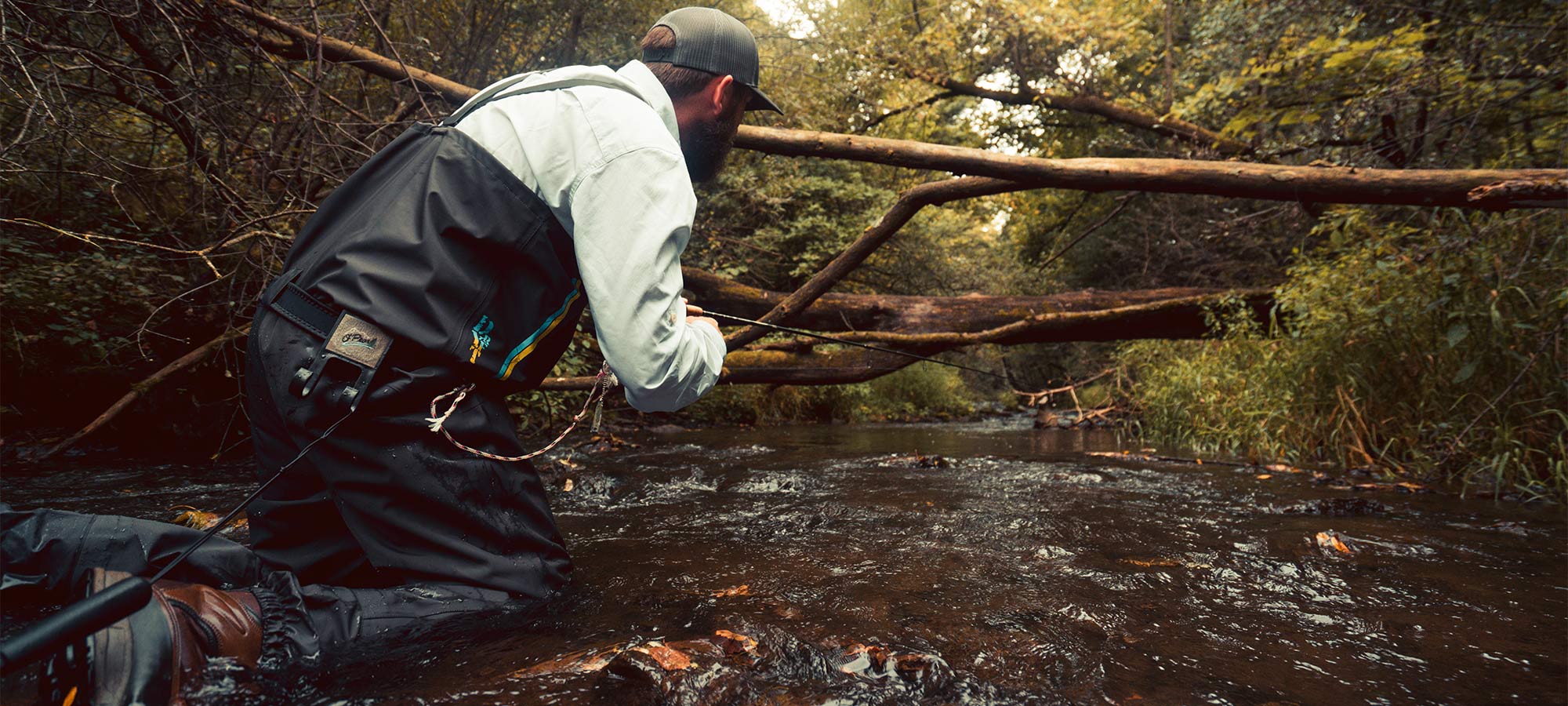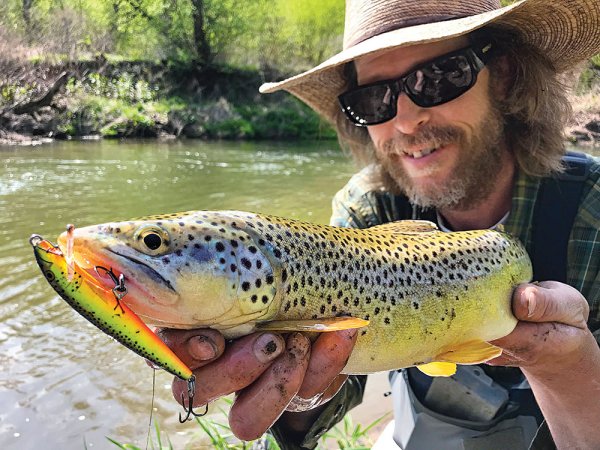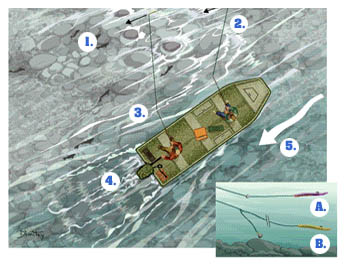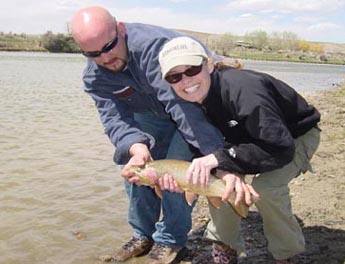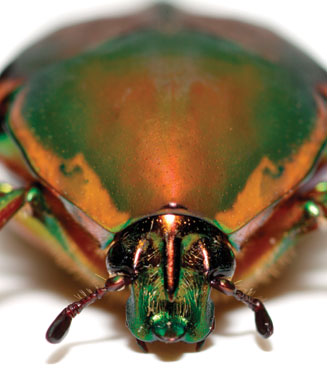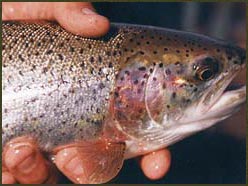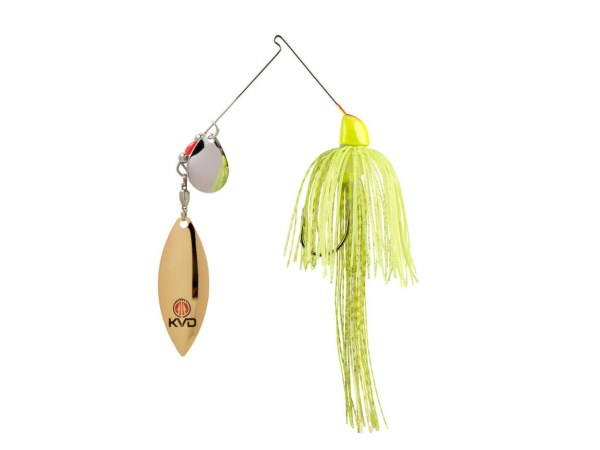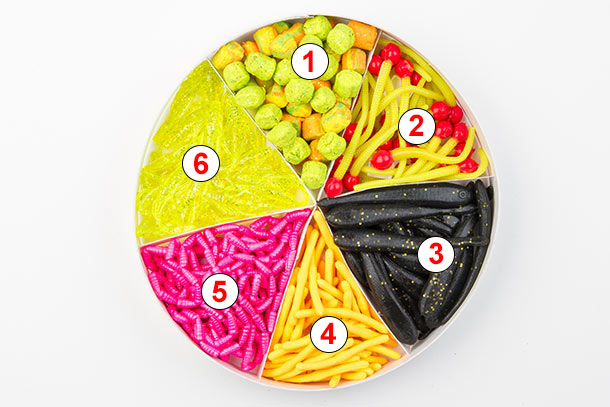
There’s an enchanting geological masterpiece located in the Midwest called the Driftless Area. This unique region, unscathed by ancient glaciers, is characterized by aggressive topography—steep, breathtaking valleys, jagged limestone cliffs, and massive stands of mixed timber. The real treasure of the area lies beneath the ground: Some 600 natural springs feed thousands of miles of clean, frigid streams across the Driftless. It’s an ideal landscape for supporting trout, and with that comes a long and strong trout fishing heritage.
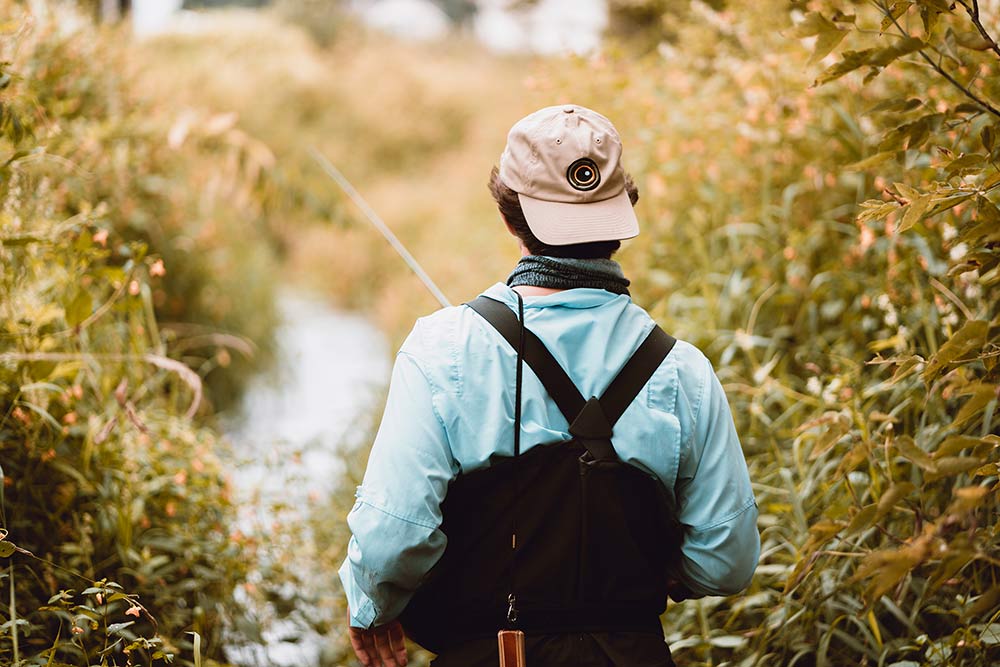
Brook trout—technically not even a trout, but rather a species of char—are the only natives here, swimming in the most pristine currents of the Driftless as they’ve done forever. Brook trout are ferocious yet fragile, demanding nothing but the purest water for their survival, thus their presence always indicates a healthy watershed. Connecting with an ancient brookie should be on every Driftless angler’s bucket list. Rainbow and brown trout, hardier distant cousins of brookies, didn’t exist in the Driftless until folks brought their eggs over on a ship and dropped them into streams starting in the 1800s. Today, naturally reproducing (“wild”) browns get the most attention here because of their astonishing abundance and glowing beauty. Rainbows are usually the table fare.
More than 157,000 anglers wet a line for trout in the Driftless every year. On paper that sounds like a lot of trout fishermen, but pressure on the stream banks is surprisingly minimal. If you want a killer stretch all for yourself, just beat the bush a little bit.
In “A Spring-Fed Summer,” my brother and I bring you along for a glimpse into the magic that can be found in the Driftless. When you get the urge to bend a rod in the area—and you will—start here by digging into this info and advice from authentic Driftless trout bums.
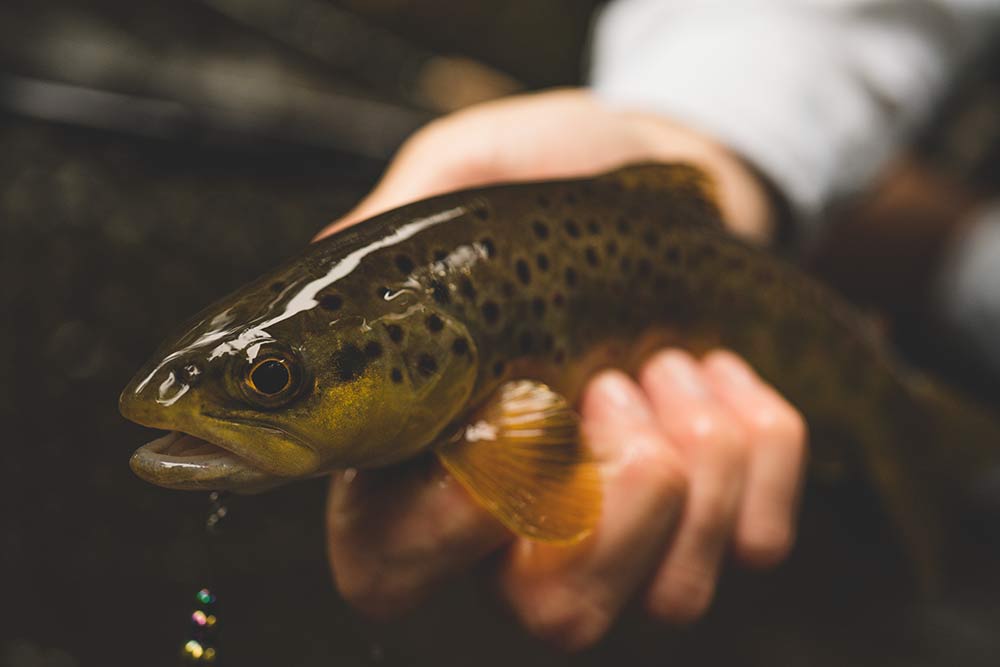
Where To Go For Driftless Trout
The Driftless Area occupies parts of Minnesota, Wisconsin, Iowa, and Illinois. In square miles, it’s approximately the size of West Virginia. Before you pack your waders and start driving, choose your Driftless destination wisely.
Southwestern Wisconsin is the Mecca of Driftless trout fishing, with more than 13,000 miles of designated trout streams and excellent public access. Aside from its massive public lands (approx. 5.7 million acres), Wisconsin has liberal water access laws that allow you to legally enter “navigable streams” from public ground and keep fishing through private—just keep your feet in the water.
Consult the Wisconsin DNR’s list of classified trout streams to find interactive maps and start scouting.
Southeastern Minnesota is your second best option for hammering Driftless trout. The state has “only” 700 miles of designated trout streams, but I promise you couldn’t fish it all in a lifetime. Stream access in Minnesota is great, too, with more than 200 miles of easements that allow you to enjoy prime trout fishing via private properties. Minnesota also has a similar “wet feet” law to Wisconsin, so you probably won’t have to turn around when you see that picturesque pool on the other side of a “no trespassing” sign.
Download “Trout Angling Opportunities in Southern and Central Minnesota” and you’ll be on your way to a successful Driftless trout adventure. Another great up-and-coming resource for finding Driftless trout streams in Minnesota is the TroutSpotr app.
Iowa and Illinois are the two other state options if you want to dip your toes in Driftless trout waters. Don’t waste your time in Illinois unless you’re feeling extremely ambitious—very few trout streams, limited access, large crowds, and mainly just put-and-take rainbows. Northeastern Iowa, though it pales in comparison to Minnesota or Wisconsin, continues to gain Driftless notoriety with recent stream-improvement efforts that are finally paying off. Giant browns are making headlines out of Iowa, and nearly half of the state’s 100 trout streams are hosting natural reproduction.
Depending on the duration of your journey, as a nonresident you’ll pay $20-60 for necessary trout fishing licenses in any of the Driftless states.
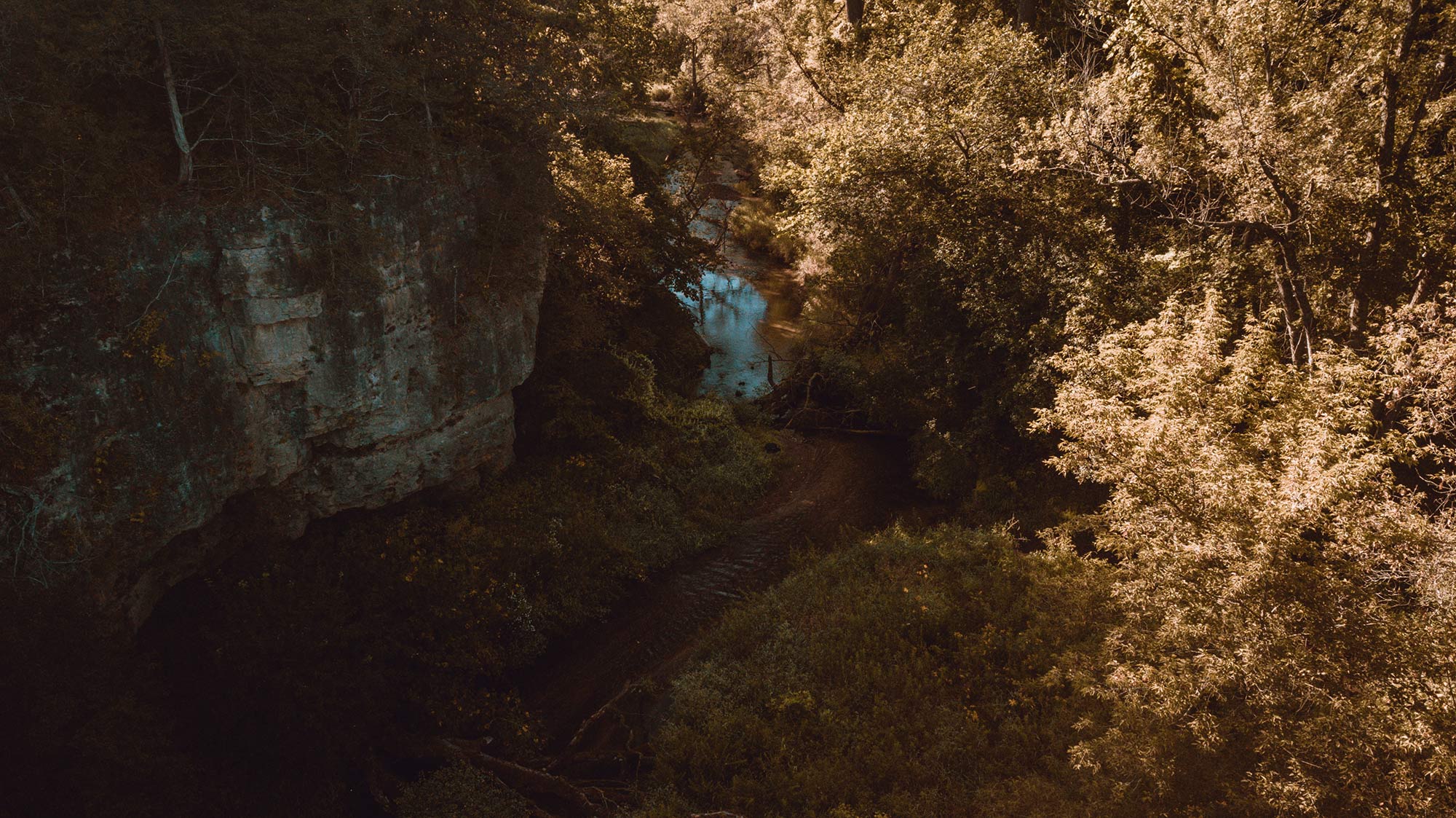
Angling Tactics For Driftless Trout
A Case For Spin Fishing
Nationally, “fly fishing and “trout” are virtually synonymous under the popular spotlight. There are half a dozen fly fishing magazines in circulation with fly style as the focal point and trout as the main species of interest. Even Trout Unlimited—the official trout fishermen’s organization—seems to put fly angling at the forefront. Where am I going with this? Spin fishermen are terribly underrepresented in the trout fishing community. As you could guess by now, I’m one of them. Spin guys and gals number more than 50,000 in the Driftless Area alone, and probably exceed a million nationally.
Spin it to win it. That’s my motto—at least in the Driftless, where some of the best trout holes are locked up in a prison of weeds guarded by overhanging limbs. My crew calls it “skinny water.” We love it because so do trout … and most fly anglers hate it. Precision casting in tight quarters is the main benefit of spinning for Driftless trout. We can capitalize on secluded stretches of water and virgin fish with spinning tackle, especially during the dog days of summer when streamside weed growth is at its peak.
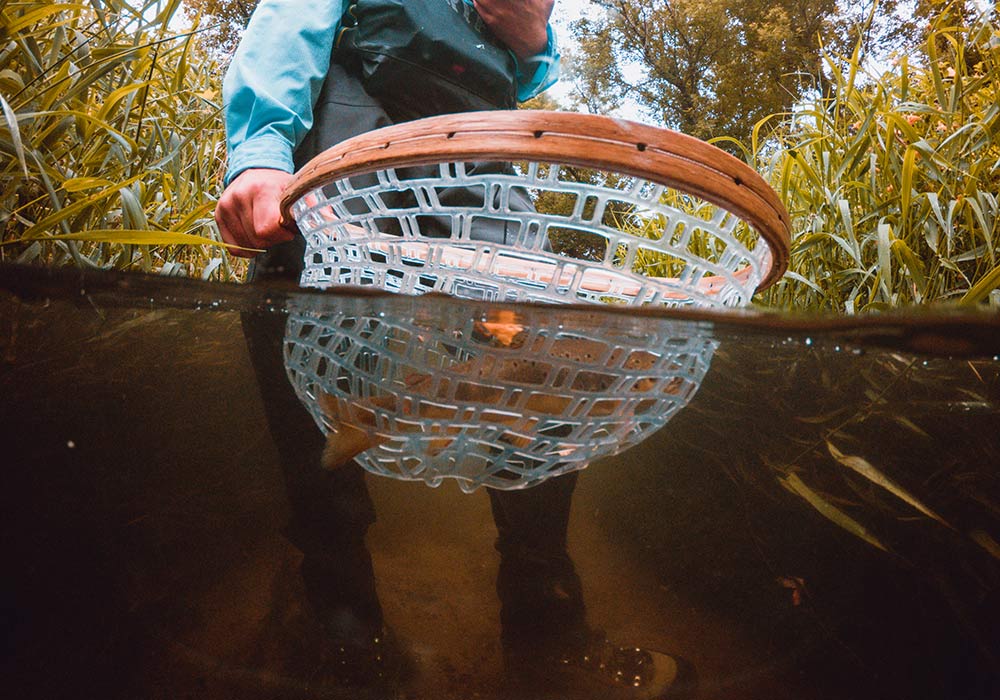
Trout Spinning Gear
A typical spinning setup for trout fishing involves a sensitive spinning rod, a smooth spinning reel, and a full spool of 6-pound-test fluorocarbon line.
A short ultralight seems to be the go-to rod for most spinning trout anglers, but I prefer a 6’6″ medium-light, fast-action rod. With this choice of rod, I can cast farther and my reaction time and hook sets are faster.
Fluorocarbon is an excellent line option for trout fishing. It’s thin in diameter, sensitive, strong, and resistant to abrasion. It has a tendency to sink faster than monofilament, and it’s virtually invisible underwater.
Spin anglers might toss worms, crankbaits, plugs, or any imaginable spinning tackle to catch trout. I prefer to keep it 100-percent spin by exclusively tossing in-line spinners. Why? For starters, I just don’t get the same thrills by tossing live bait. Secondly, I believe if a trout is going to eat a sizeable artificial lure, it’s not going to choose, for instance, a green crankbait over a green spinner. That said, I keep it simple and stick to a well-rounded arsenal of in-line spinners.
No matter the lure, keeping a razor’s edge on your hooks will save you from certain—and completely unnecessary—defeat on the water. Work Sharp makes a Guided Field Sharpener with a super handy hook-honing surface; keep one in your waders and you won’t get to make any excuses about losing fish because of dull hooks.
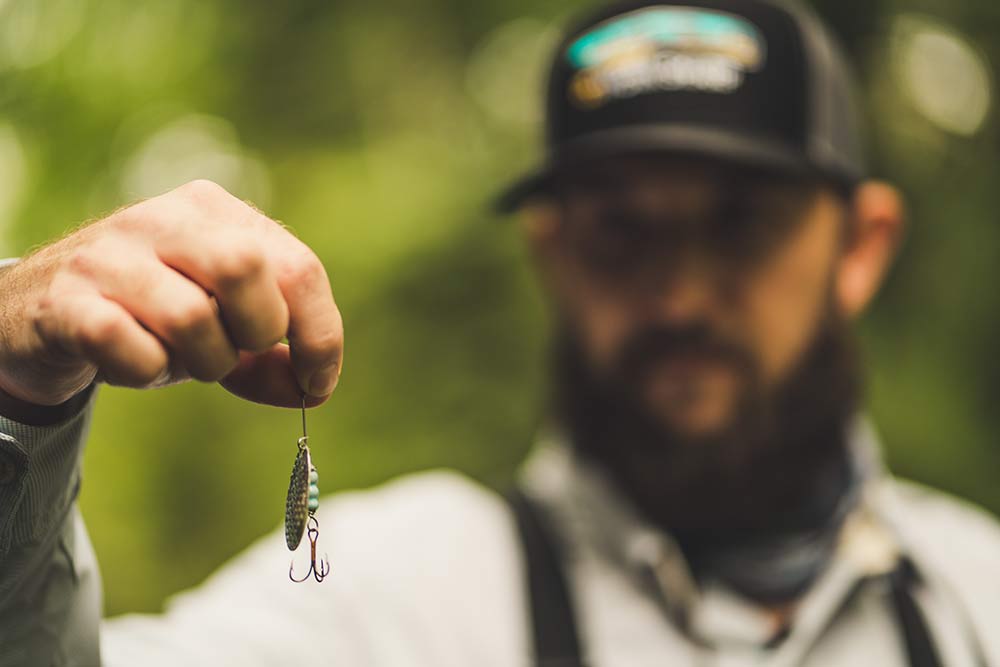
How To Choose A Trout Spinner
Spin fishing for trout is generally a game of speed and triggering reaction strikes. Trout usually feed with their snouts facing upstream, eyeing food as it approaches and deciding if it’s worth their effort to eat. Trout will also hide under cutbanks (aka “undercut” banks)—a staple of Driftless trout waters—taking advantage of the dark overhead cover to ambush passing prey. Compared to most flies, in-line spinners look like a big meal to hungry trout, so they have a hard time ignoring a flashy feast as it quickly zips by.
Does it really matter what spinner pattern you throw? John Eggers, an avid Minnesota trout angler and designer of custom in-line spinners, says yes. Eggers chose to make spinning his primary technique for trout fishing decades ago, and his reason was simple: “I just caught more trout with spinners than anything else.”
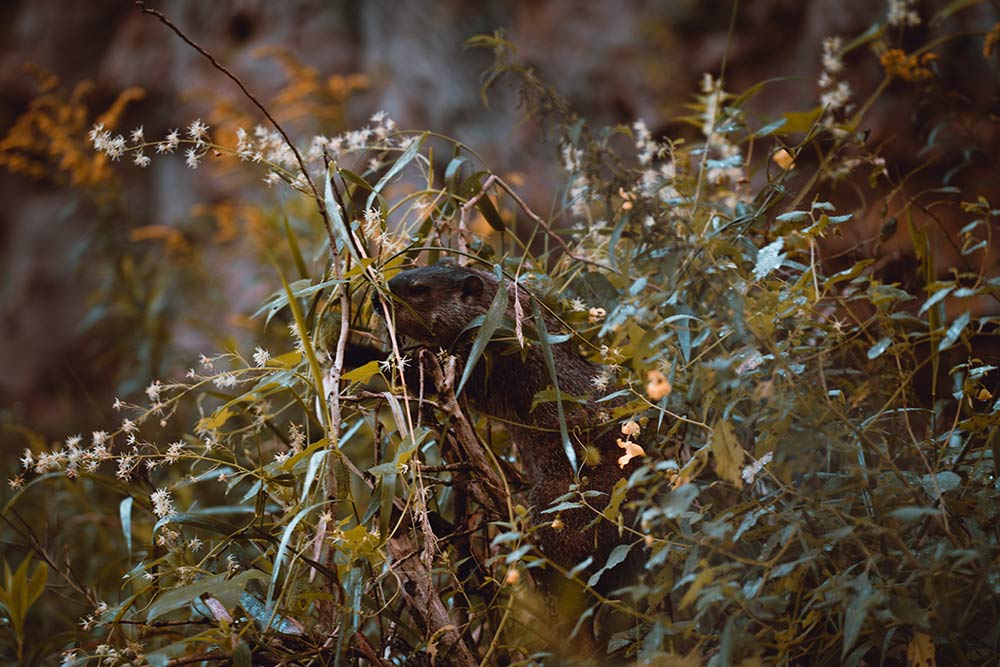
Eggers has caught thousands of Driftless trout, and he’s no stranger to hundred-fish days. “Size and color matter. I’ve tested this on dozens of trips. When your buddy out-fishes you tenfold with a different pattern on multiple occasions, and you’re fishing side by side, you know there’s something to selecting the right spinners for the right conditions.”
There are three main physical attributes to consider when selecting a spinner: size, blade color, and body color…
Size: Eggers believes most spinners on the market are too small—they cater to anglers’ misconception that trout are finicky predators. That’s one reason he started building his own spinners. In reality, trout just want an easy meal. The most important part of the presentation is the presentation itself—a trout needs to see the lure. Small, lightweight spinners are difficult to cast and retrieve effectively in the strike zones of deep runs or pools. Choose a big enough spinner, within reason, to get in the face of hungry trout and tempt their tummies.
Blade color: The blade of a spinner is the key attractant of the entire lure, in its color, flash and vibration. As a rule of thumb, trout see dark colors best in darkness or stained water, and lighter colors on bright days or in clear water. Match your blade to light and water conditions accordingly. In clear water, it can be effective to match blade colors to common food sources. Springtime trout could slam a silver blade thinking it’s a baitfish. During summer you might try a painted bright green to mimic grasshoppers or frogs. In the fall maybe copper becomes the ticket to imitate crayfish. It doesn’t hurt to use your imagination.
Body color: If a trout hasn’t already snapped up your spinner after reacting to the blade, and it continues to follow, it’s a reasonable bet the trout is fixated on the static body of the spinner. Just like with blade color, selection here comes down to complementing water conditions for maximum visibility and mirroring current natural food sources.
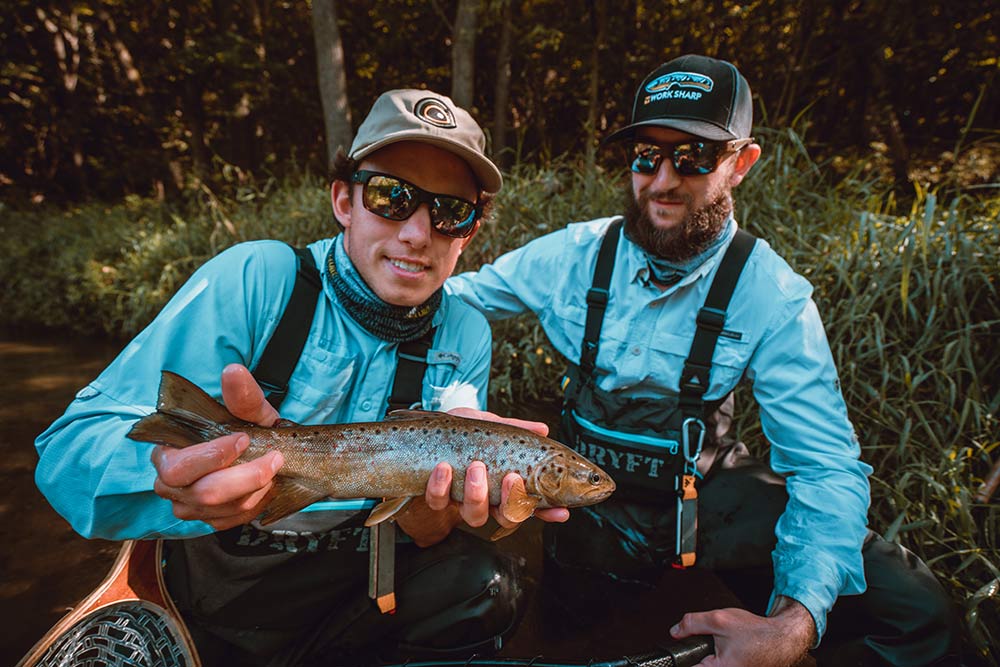
Spinning A Driftless Trout Stream
You’ll be most productive by starting your trip downstream and working upstream. The reverse water flow helps to mask the impact of freaky sound waves that will project forward to sketchy trout. Stay on dry ground when possible to avoid water noise altogether, but be cognizant of cutbanks—you don’t want to spook out the mac-daddy brown that’s hiding below, and you definitely don’t want to plunge through the false grassy floor.
By traveling upstream, you’re also less likely to be spotted by feeding trout because they’re typically treading water while looking in the other direction. Trout see upward, so make long casts when possible, but stay low if you need to sneak close to a promising hole for a perfect spinner drop.
Cast upstream and reel quickly with the current to keep the spinner blade rotating. Quite often you’ll get only one chance to present your spinner to a willing trout. Key in on structure—riffles, runs, logjams, cutbanks, pools, etc.—and make every cast count.
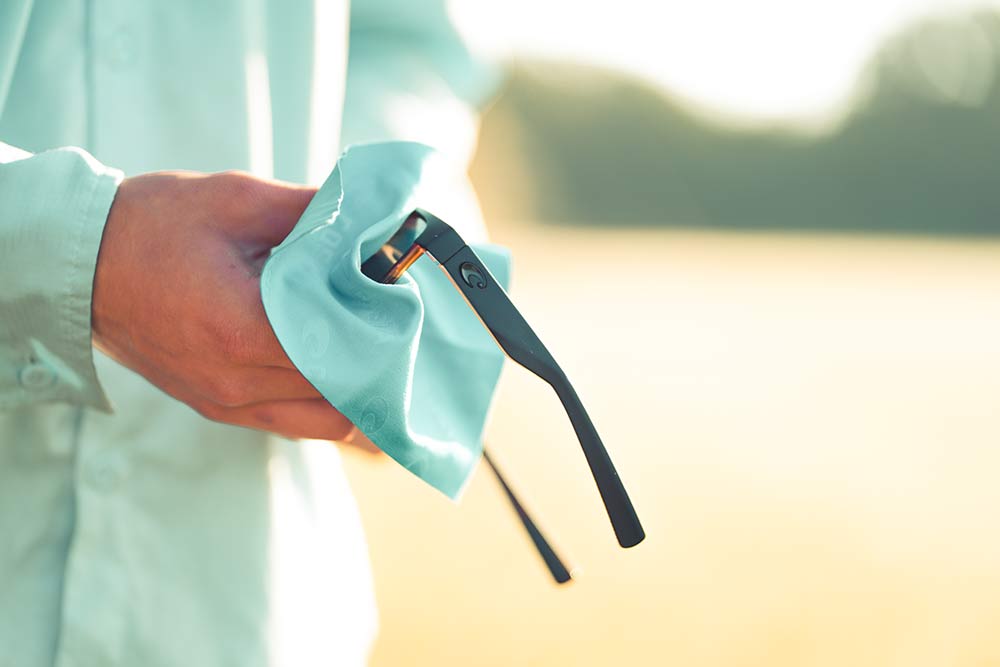
Strikes will usually be fast and deliberate, so your response must be the same. When you so much as smell a strike, set the hook. Wear polarized sunglasses and watch the water intently for trout that might be lurking ahead, or those that might be following your spinner. Sometimes a slight pause is all you need to convince a follower to bite.
There’s real sophistication and art in choosing the right bug to trick a selectively feeding trout with a fly rod, but getting a trout to slam a large piece of plastic or metal from a spinning rig is a pretty wicked dupe.
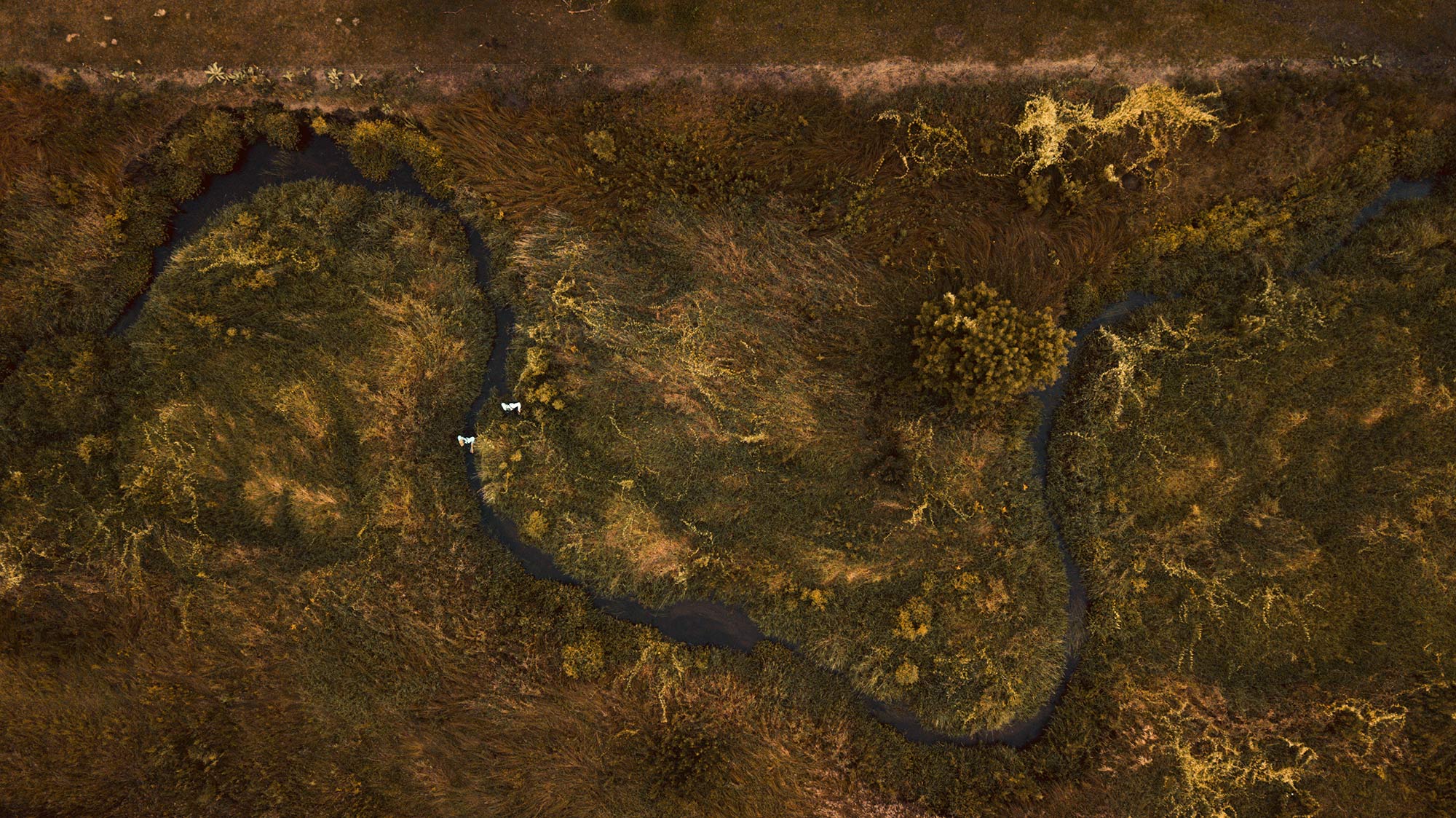
Fly Fishing For Driftless Trout
Getting off my spinning pulpit, I’ll readily admit that you’ll be happy as a blue heron in the Driftless if you’re a fly-or-die trout angler. Bugs hatch here just like anywhere, and there’s plenty of water to slap for slurping predators. Just ask Mat Wagner, owner of Driftless Angler Fly Shop.
Wagner and his wife, Geri, were deeply immersed in the fly fishing scene in Taos, New Mexico. He was a manager and fishing guide at a fly shop, she just loved to fish. Thirteen years ago they decided to pull up their stakes and start a new fly operation of their own. After researching all the alluring sleeper trout spots across the world, they confidently chose Viroqua, Wisconsin.
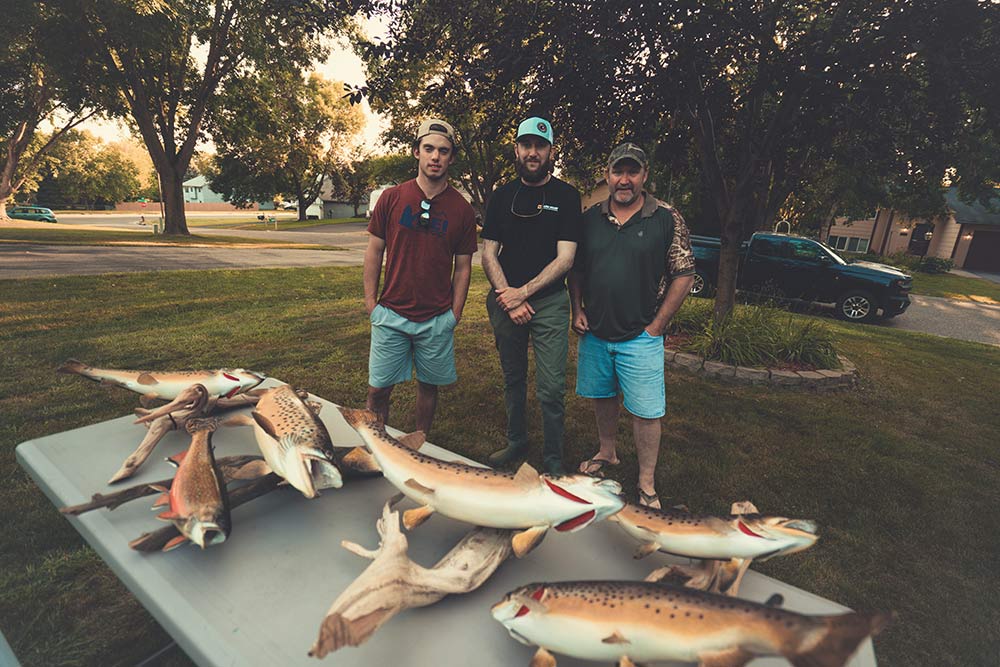
“It’s just one of those under-the-radar fisheries that not too many people were talking about, but there was a big push by conservation organizations to do some [trout stream] restoration work in this area. We were blown away by the opportunity here, in terms of numbers of fishable waters, access, and how well these creeks are taken care of.” Viroqua is situated in Vernon County—boasting 63 trout streams with 250 miles of classified trout water.
What should you be tying on your tippet? Depends, of course, but Wagner offers this Driftless wisdom: “The number one fly for the entire season would be a scud pattern.” If you’re solely chasing that elusive 20-inch mark on a Driftless brown, Wagner recommends leech patterns, streamers or mousing.
Micah and Abigail Crider, a married couple from the suburbs of Saint Paul, started fly fishing for Driftless trout just 3 years ago. “I’ve lived in Wisconsin and Minnesota my whole life, and I didn’t realize the expansive amount of trout fishing opportunities that were right in my home turf,” Micah says. “We may find ourselves venturing all over the country fishing, but the Driftless is always going to be home and a fishery that holds a special place in our hearts.”
Like it has done to so many others, the Driftless trout bug silently hatched and took awhile to emerge for the Criders. But now it has taken flight and there’s no turning back.
